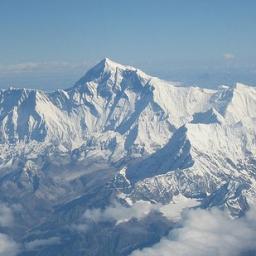Packing for two years, off the grid in the Himalayas...
 With a budget of just $1,200, and room for one carry-on and two check-in suitcases, both of no more than 60 kg (132 lbs), total, how would you prepare for living completely off-the-grid for two years in a remote village in the Himalayas?
With a budget of just $1,200, and room for one carry-on and two check-in suitcases, both of no more than 60 kg (132 lbs), total, how would you prepare for living completely off-the-grid for two years in a remote village in the Himalayas? That's the question asked by the Shortwave Listening Post, based on a user request, obviously with an intended focus on radio equipment and accessories. The necessities like food, shelter and warm clothing apparently being taken care of for you. Radio certainly would seem like the way to go for inexpensive entertainment and information in very remote areas, but answers that instead include satellite internet services (that stay within the budget with 2-years of service) could be equally interesting, if they are in fact available and practical.
http://swling.com/blog/2014/09/virtual-radio-challenge-ii-two-years-off-grid-in-the-himalayas/
Wind, similarly, isn't consistently available. Even if you're in a windy area, you may have to unpredictably deal with many weeks with no appreciable wind, with no notice. Plus I checked prices on small wind turbines, and they're little or no cheaper than PV panels per the capacity, very bulky in their own right, and similarly will require taking large and heavy segments of steel poles with you for mounting. And like water power, designing and constructing one locally would be a big project for an individual, would not allow you to hit the ground running and have power right away like PV solar panels, etc.
And that's the BEST CASE. Worst case, you'll find yourself in an area where there is zero wind, except for the occasional storms, year-round, no available location to install it, complaints from neighbors about the noise, and lots of dead birds around it.
That said, it can be a vastly cheaper way to go. You can pickup a refurbished alternator for $43:
* http://www.amazon.com/Quality-Built-7127103-Premium-Domestic-Alternator/dp/B000EZW5QS/
Given enough input energy in whatever form, that should output 50 amps steady, while 700 watts of solar panels would cost $1,000, would be far too large to pack, and would honestly only provide maybe 1/4 the rated power due to low light levels, and low duty cycle due to no power at night. That's the way I'd go if I wanted to build electrical infrastructure for an entire village, but certainly not for my own modest energy needs while traveling. And given a lack of flowing water sources, and insufficient wind, you might need to hand-crank the thing for all your energy needs, which would be quite a feat. At that point, you'd be better off with something designed for such use:
* http://www.amazon.com/Generator-Emergency-Portable-Lightweight-Polycarbonate/dp/B00EZS8VQS